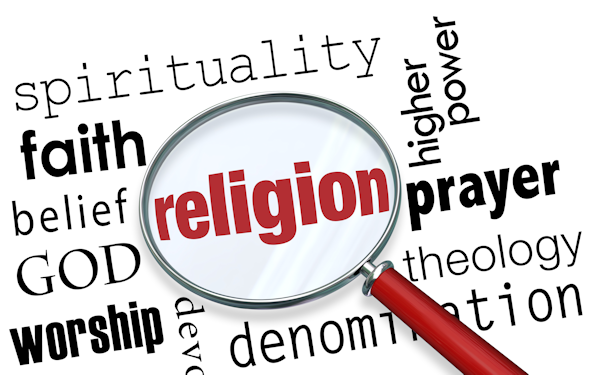This week’s Iowa caucuses demonstrated the political influence of the state’s white evangelical Protestants.
While Iowa has bucked the trend of a U.S. Protestant decline, other parts of heartland America have not, says Robert P. Jones of the Public Religion Research Institute.
Jones spoke about the impact of religious and cultural changes on American politics during a Feb. 3 webinar sponsored by the Religion Communicators Council. Each fall, the institute conducts its American Values Survey, one of the largest surveys of U.S. religious and political identity, with results for all 50 states and the 30 largest metropolitan areas.
The idea of WASPs — White Anglo-Saxon Protestants — being the default religious identity for the United States is no longer true, Jones pointed out. In 1974, white Protestants accounted for a majority of the adult population at 54 percent. Today, they make up just 34 percent, he said.
While Roman Catholic affiliation has held steady, a closer look shows a steep decline among white, non-Hispanic Catholics by 2000, with their numbers being replaced by other ethnic groups, mainly Latino/Hispanic members. White, non-Hispanic church members account for less than 15 percent of U.S. Catholics today, Jones said.
Overall, white Christians account for the minority of the population in 19 states, according to the institute’s research. A contributing factor is the rise of those who have no formal religious affiliations. The 23 percent of unaffiliated Americans surpasses, as separate groups, white evangelical Protestants and white mainline Protestants, as well as Catholics as a whole.
Rise in “unaffiliated”
In the United States, religion remains vitally important, Jones explained, but the unaffiliated “have to be a part of the discussion in the way they haven’t been in the past.”
Religiously unaffiliated Americans —popularly referred to as the “nones” — are a diverse group among themselves. Only about a third identify as atheist or agnostic. Some would be considered secular, Jones noted, while others believe in God and pray regularly but “they just don’t claim a formal religious tradition.”
One in three young adults aged 18-34 are unaffiliated — making it the most common religious identity among this age group.
Their growing number also reflects a generation gap. Two-thirds of seniors are white and Christian, but only 3-in-10 young adults identify themselves as white Christians.
Even in Iowa, the number of unaffiliated citizens has increased to about 24 percent. Christians, however, have not lost their political clout. Republican candidates remain reliant on white evangelical Christian voters in Iowa, who, at 26 percent of the population, over-represent caucus participants at 60 percent.
Nationally, the religiously unaffiliated have nearly quadrupled in size since the early 1990s and represent 22 percent of the population but only 12 percent of registered voters. “At least so far, they have not been turning out in proportionate numbers,” he said.
Other divisions among Americans
The generational divide also is evident in survey results about whether America can still be considered a “Christian nation” and how important it is for Americans to be Christian.
Another significant difference appears in survey responses that signal a growing pessimism over equal opportunity and the ability to pursue the American dream of prosperity. “There’s a huge class divide between white working-class Americans and white college-educated Americans,” on these economic issues, Jones explained.
“It’s not just about demographic and cultural change or religious change, it’s also about economic anxiety,” he said.
Cultural resentment is brewing below the surface of that anxiety, Jones pointed out. Survey questions about whether America’s best days are ahead of or behind it show a large political divide. Racial divides are reflected in questions about the needs of minority groups and immigrants.
A slight majority of Americans now have a negative attitude about Islam, he reported. The number of Americans who agree with statement that the values of Islam “are at odds with American values and way of life” increased from 47 percent in March 2013 to 56 percent in November 2015.
Part of the problem, Jones said, is that Muslims account for less than two percent of the U.S. population, which means that most people’s perceptions are not based on individual contact.
“It does mean the media has a real responsibility to educate and provide a kind of basic literacy,” he added.
Based on survey results, Jones believes there are two narratives being spread in the U.S. about Islam. “The two groups that, on surveys, say they know about Islam are PBS viewers on the one hand and FOX news viewers on the other,” he added, who may be getting different media messages.
But more agree that Muslims are an important part of the U.S. religious community today, he said, pointing to an opportunity “for some increased (news) coverage that would help the country.”
Reported by:
LINDA BLOOM, United Methodist News Service
Last Updated on December 27, 2022

